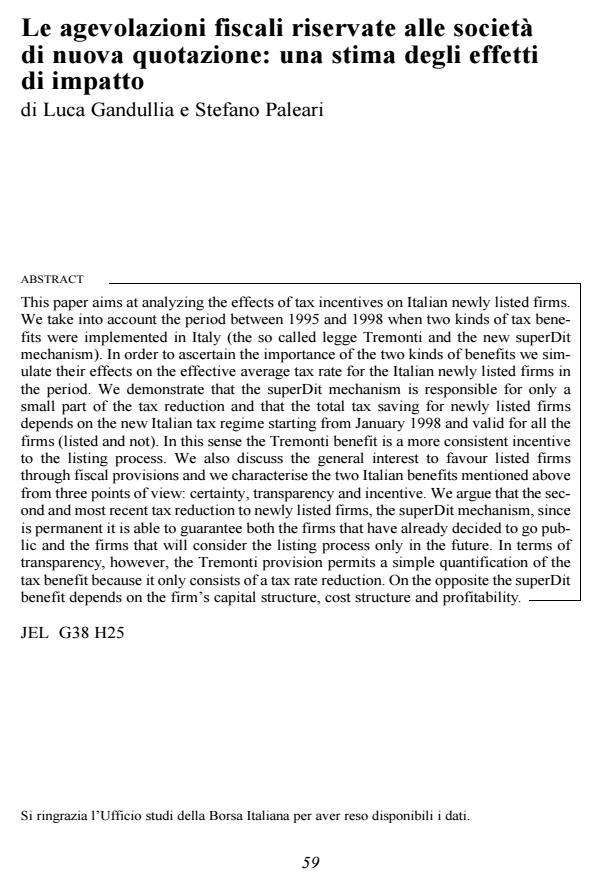Le agevolazioni fiscali riservate alle società di nuova quotazione: una stima degli effetti di impatto
Journal title ECONOMIA PUBBLICA
Author/s Luca Gandullia, Stefano Paleari
Publishing Year 2001 Issue 2001/3
Language Italian Pages 22 P. File size 125 KB
DOI
DOI is like a bar code for intellectual property: to have more infomation
click here
Below, you can see the article first page
If you want to buy this article in PDF format, you can do it, following the instructions to buy download credits

FrancoAngeli is member of Publishers International Linking Association, Inc (PILA), a not-for-profit association which run the CrossRef service enabling links to and from online scholarly content.
This paper aims at analyzing the effects of tax incentives on Italian newly listed firms. We take into account the period between 1995 and 1998 when two kinds of tax benefits were implemented in Italy (the so called legge Tremonti and the new superDit mechanism). In order to ascertain the importance of the two kinds of benefits we simulate their effects on the effective average tax rate for the Italian newly listed firms in the period. We demonstrate that the superDit mechanism is responsible for only a small part of the tax reduction and that the total tax saving for newly listed firms depends on the new Italian tax regime starting from January 1998 and valid for all the firms (listed and not). In this sense the Tremonti benefit is a more consistent incentive to the listing process. We also discuss the general interest to favour listed firms through fiscal provisions and we characterise the two Italian benefits mentioned above from three points of view: certainty, transparency and incentive. We argue that the second and most recent tax reduction to newly listed firms, the superDit mechanism, since is permanent it is able to guarantee both the firms that have already decided to go public and the firms that will consider the listing process only in the future. In terms of transparency, however, the Tremonti provision permits a simple quantification of the tax benefit because it only consists of a tax rate reduction. On the opposite the superDit benefit depends on the firm’s capital structure, cost structure and profitability.
Luca Gandullia, Stefano Paleari, Le agevolazioni fiscali riservate alle società di nuova quotazione: una stima degli effetti di impatto in "ECONOMIA PUBBLICA " 3/2001, pp , DOI: